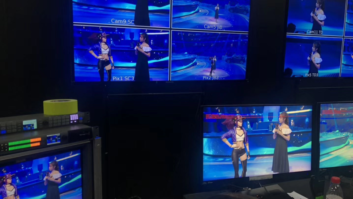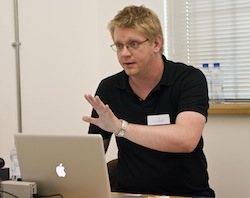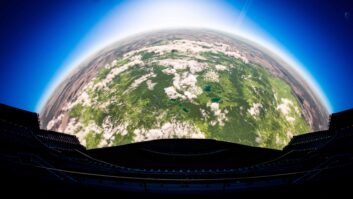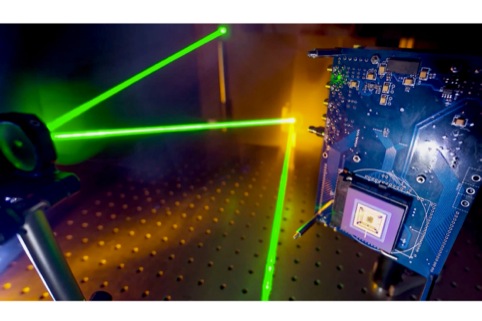
A camera fast enough to see light travelling through the air and even see around corners has been developed by researchers at Heriot-Watt University in Edinburgh.
Photons travel so fast that normal high-speed cameras cannot freeze their motion, but the Heriot-Watt team is using a new type of camera (developed by the University of Edinburgh) that is so sensitive, and so fast, that it can capture individual photons.
The camera is made up of an array of single photon sensitive pixels, each of which is about 10 times more sensitive to light than the human eye and is more than a billion times quicker than a person can blink. Although the photons are travelling at the speed of light (about 300 million metres per second), each exposure (of just 67 picoseconds – 67 trillionths of a second) is fast enough to capture them as they cover just a very small distance, which limits any blurring.
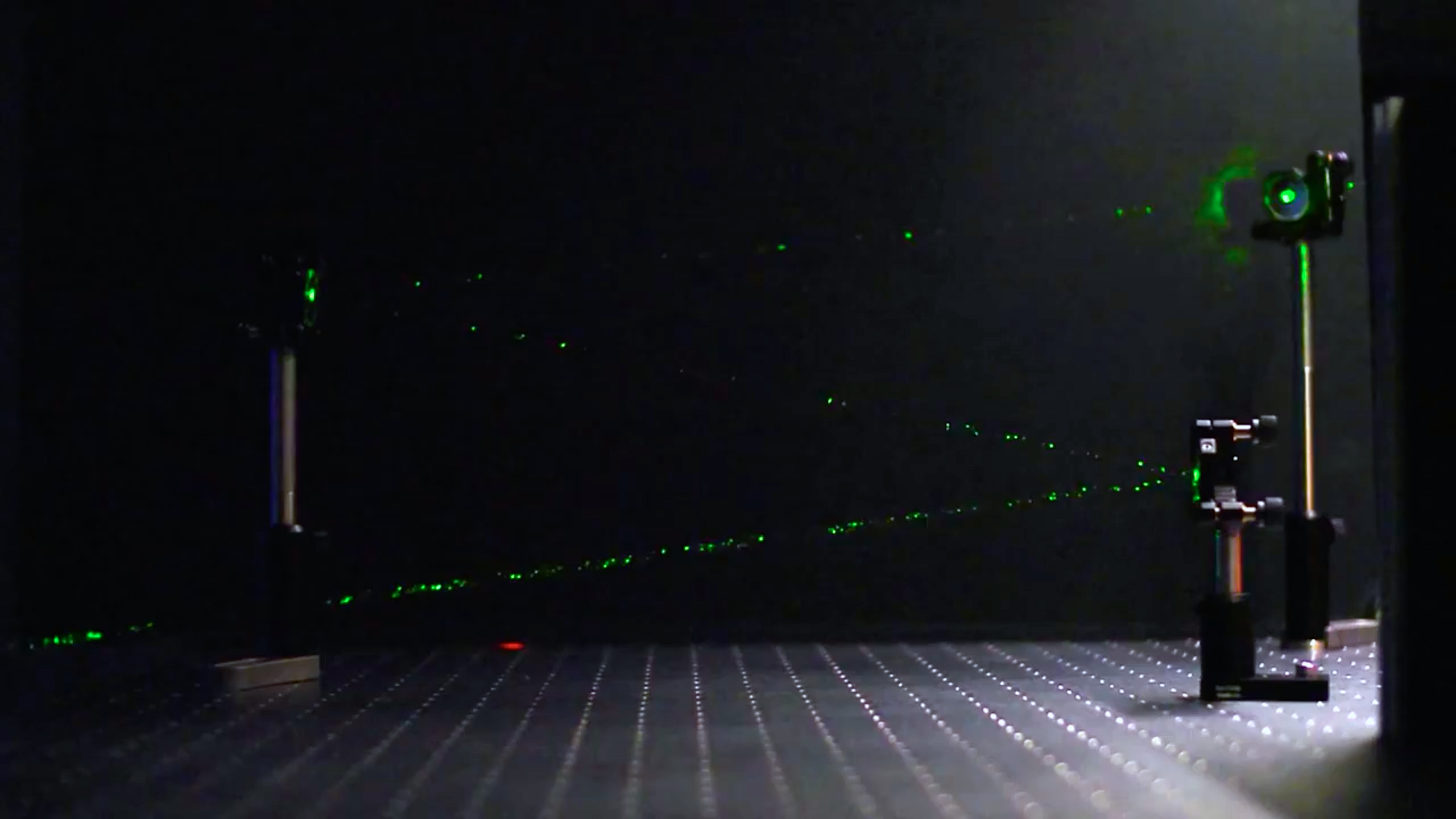
“It is a camera with, effectively, a frame rate of 15 billion frames per second,” and is “the fastest high-speed camera in the world,” said Dr Jonathan Leach, School of Engineering and Physical Sciences, Institute of Photonics and Quantum Sciences. “We can effectively freeze light in motion.”
The camera works in combination with a pulsed laser source, and in the demonstration as individual photons collide with air molecules, some were captured by the camera.
As the pulse of light leaves the laser, a signal is sent to the camera to start individual timers for each pixel, so that it can precisely record the time a photon hits it. Such precise timing allows the difference between the time of arrival of each photon to be used to recreate the object the light has been scattered by, while the sensitivity allows for the fact that so little of the light emitted will get back to the sensor. The laser is fired 4,000 times per second, at different angles, to allow the computer to reconstruct the shape and position of any objects – even if they are hidden.
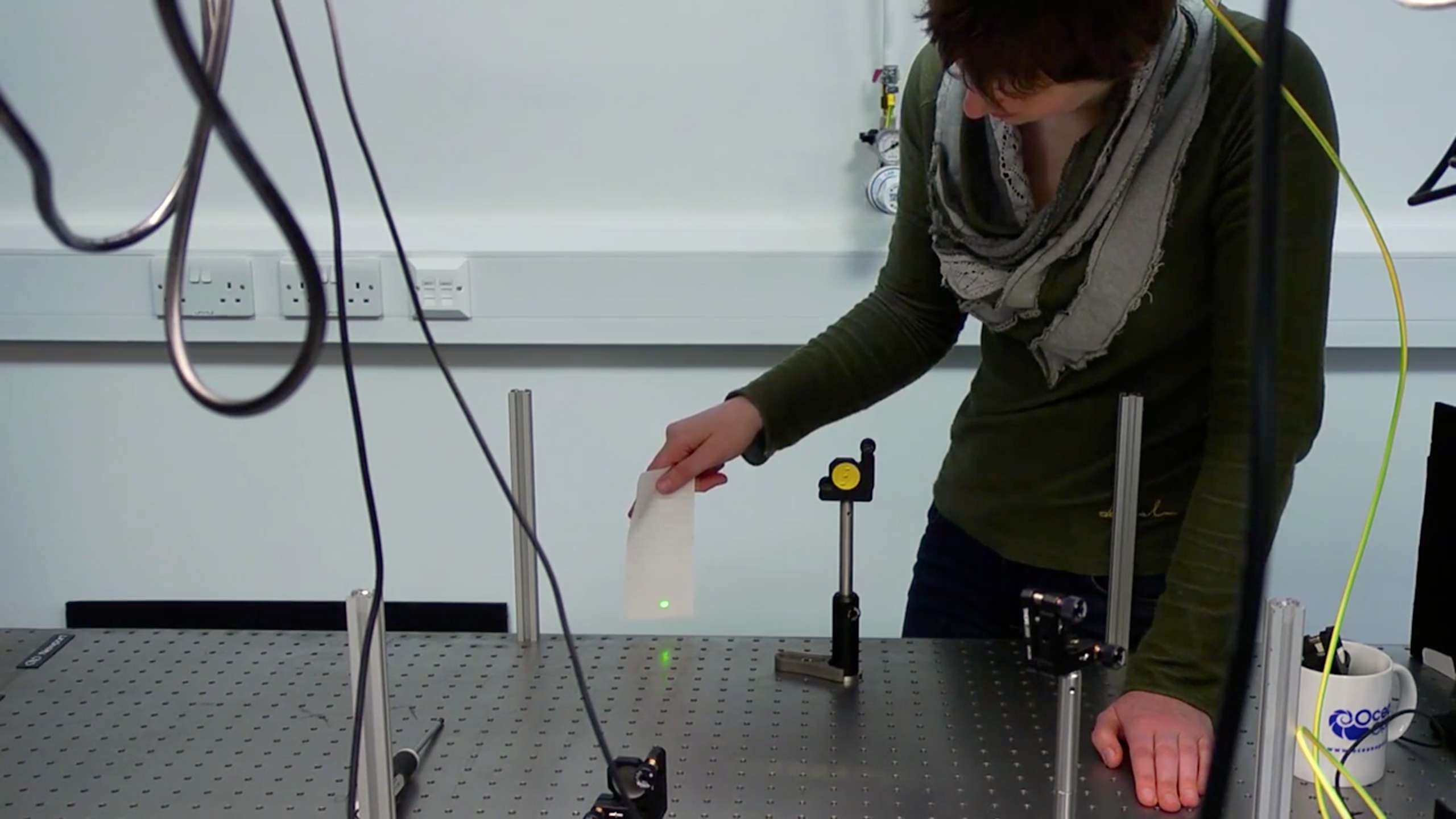
The current camera, which uses a 32×32 pixel sensor, has limited depth resolution (of only a few centimetres), but the University of Edinburgh is working on increasing its resolution.
The camera was on show last week at The Royal Society’s annual Summer Science Exhibition, in London, as part of a joint Creative Cameras display from Glasgow University and Heriot-Watt, and lends itself to applications where precise timing information is needed, such as recording the scattered light from objects hidden from view (so that it can effectively see around corners).
It is more effective in the dark, as there are fewer stray photons from other sources, but the wavelength of the laser can be tuned very finely, which will help distinguish it from background light. It will also get a better signal from larger, whiter objects, or if whatever the laser bounces off to reach the object scatters light well – fortunately, it doesn’t need many photons to return in order to give useful information.
It could be used for search and rescue, to help find people trapped under rubble, or for medical imaging (using new forms of endoscopy) or in dangerous situations. It can also be used for range finding (calculating distances very accurately, which would be useful for 3D imaging for engineering, or to help people to park). “It is very cutting edge, and we’re not quite sure how we are going to implement this,” added Leach.
http://cameras.eps.hw.ac.uk/
http://www.eqo.squarespace.com
http://extremelight.eps.hw.ac.uk
www.gla.ac.uk/schools/physics/
http://sse.royalsociety.org/2014/
